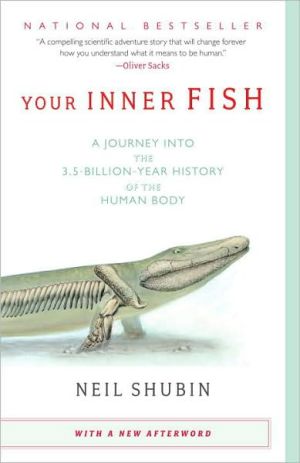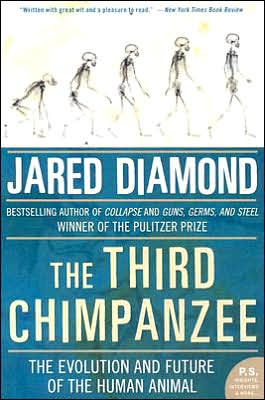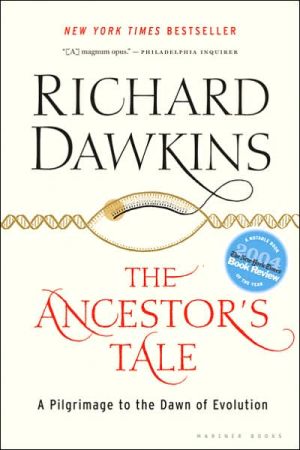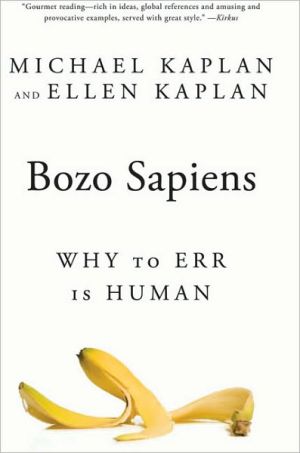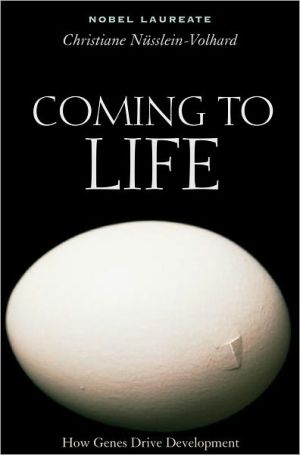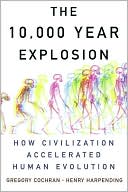Endless Forms Most Beautiful: The New Science of EvoDevo and the Making of the Animal Kingdom
Evo Devo is evolutionary developmental biology, the third revolution in evolutionary biology. The first was marked by the publication of The Origin of Species. The second occurred in the early twentieth century, when Darwin's theories were merged with the study of genetics. Now the insights of Evo Devo are astonishing the biology world by showing how the endless forms of animals—butterflies and zebras, trilobites and dinosaurs, apes and humans, are made and evolved.\ Perhaps the most...
Search in google:
What Brian Greene did for string theory, Sean Carroll—a leading biologist—does for Evo Devo. Library Journal Carroll (genetics, Univ. of Wisconsin, Madison) has written the first book for general readers on the emerging field of evolutionary developmental biology, a.k.a. "evo devo," the study of how the shapes and forms of animals and humans have developed and evolved. Besides being an important researcher at his institution, where he works on butterfly eyespot development, Carroll is also a gifted writer. In a breathtakingly effortless manner, he builds on complex concepts, e.g., that a few primitive genes gave rise to the formation of essential organs and appendages in all animals. His topic is crucial, involving the recent and profound contributions of embryology and development to our understanding of the evolution of life's diversity. These are key components of evolutionary theory that advance the conceptual "Modern Synthesis" of population genetics and paleontology of the 1930s and 1940s. In light of this new understanding, the objections to evolutionary theory based on transitional gaps and irreducible complexity become more obtuse than ever. More accessible than Rudolf A. Raff's fine pioneering work, The Shape of Life, this book belongs in all libraries. [See the Q&A with Carroll on p. 107; see also Prepub Alert, LJ 12/04.-Ed.]-Walter L. Cressler, West Chester Univ. Lib., PA Copyright 2005 Reed Business Information.
Preface : revolution #3Introduction : butterflies, zebras, and embryos11Animal architecture : modern forms, ancient designs172Monsters, mutants, and master genes373From E. coli to elephants534Making babies : 25,000 genes, some assembly required815The dark matter of the genome : operating instructions for the tool kit1096The big bang of animal evolution1377Little bangs : wings and other revolutionary inventions1678How the butterfly got its spots1979Paint it black22110A beautiful mind : the making of Homo sapiens24911Endless forms most beautiful281
\ Library JournalCarroll (genetics, Univ. of Wisconsin, Madison) has written the first book for general readers on the emerging field of evolutionary developmental biology, a.k.a. "evo devo," the study of how the shapes and forms of animals and humans have developed and evolved. Besides being an important researcher at his institution, where he works on butterfly eyespot development, Carroll is also a gifted writer. In a breathtakingly effortless manner, he builds on complex concepts, e.g., that a few primitive genes gave rise to the formation of essential organs and appendages in all animals. His topic is crucial, involving the recent and profound contributions of embryology and development to our understanding of the evolution of life's diversity. These are key components of evolutionary theory that advance the conceptual "Modern Synthesis" of population genetics and paleontology of the 1930s and 1940s. In light of this new understanding, the objections to evolutionary theory based on transitional gaps and irreducible complexity become more obtuse than ever. More accessible than Rudolf A. Raff's fine pioneering work, The Shape of Life, this book belongs in all libraries. [See the Q&A with Carroll on p. 107; see also Prepub Alert, LJ 12/04.-Ed.]-Walter L. Cressler, West Chester Univ. Lib., PA Copyright 2005 Reed Business Information.\ \ \ \ \ Kirkus ReviewsThe key to understanding diversity in nature is what happens in the embryo, says Carroll (Genetics/Univ. of Wisconsin-Madison), and he provides compelling proof. One of the great revelations of comparative genome studies over the past 20 years has been the discovery that animals share certain sets of master genes and switches that determine the ultimate shape of the animal, from flies and centipedes to mice and men. The fruit fly, for example, has a set of "Hox" genes on a single chromosome ordered in such a way that when expressed, they shape the fly's body from head to end. Mind-bogglingly, these same Hox genes, or multiples of them on different chromosomes, are found in vertebrates, mammals and humans-where they play the same roles. Such "tool-kit" genes, as Carroll calls them, and the all-important genetic switches that orchestrate where and when the tool-kit proteins are turned on, not only determine animal forms but more nuanced details. These discoveries, along with the realization that embryonic development builds on repeated modular forms (think of the multiple segments of the human spine) are also clues to complexity: Further tinkering in gene expression and timing can lead to new, specialized appendages like arms and legs or wings and webbed feet. Admittedly, taking in all the details of these discoveries in the early chapters can be heavy going, but if the reader persists, there are delights to come. In the latter half, Carroll neatly describes the development of eyespots on butterfly wings, stripes in zebras, circles on fruit flies and red hair on redheads. His final chapters tackle human evolution, providing an up-to-date reprise of current fossil finds and speculation onhow unique human traits may have developed. All this is further fallout from the new field of "evo devo" (evolutionary developmental biology) and provides more fuel to fight the creationist/intelligent-design folks. Deserves to find its way into schoolrooms across the nation. Author tour\ \


